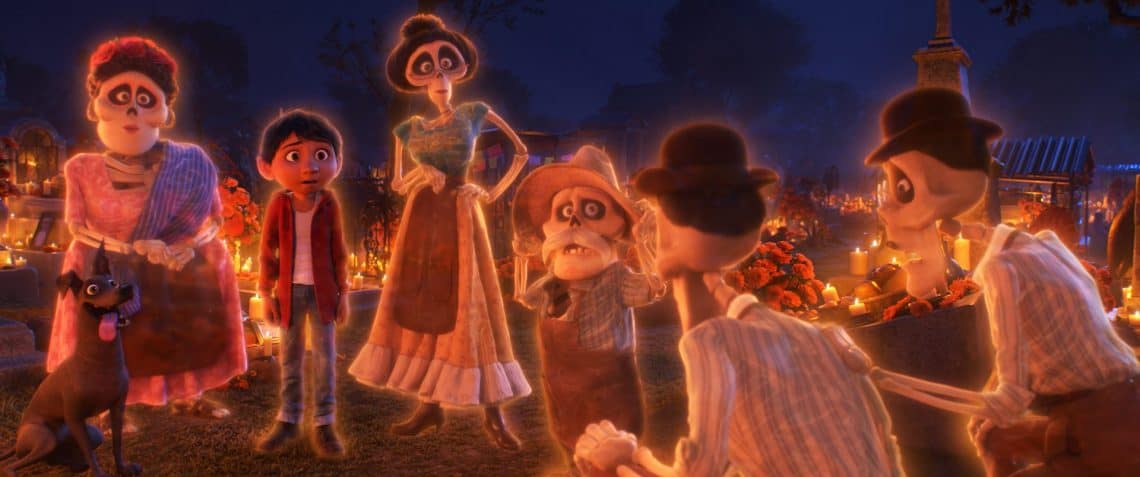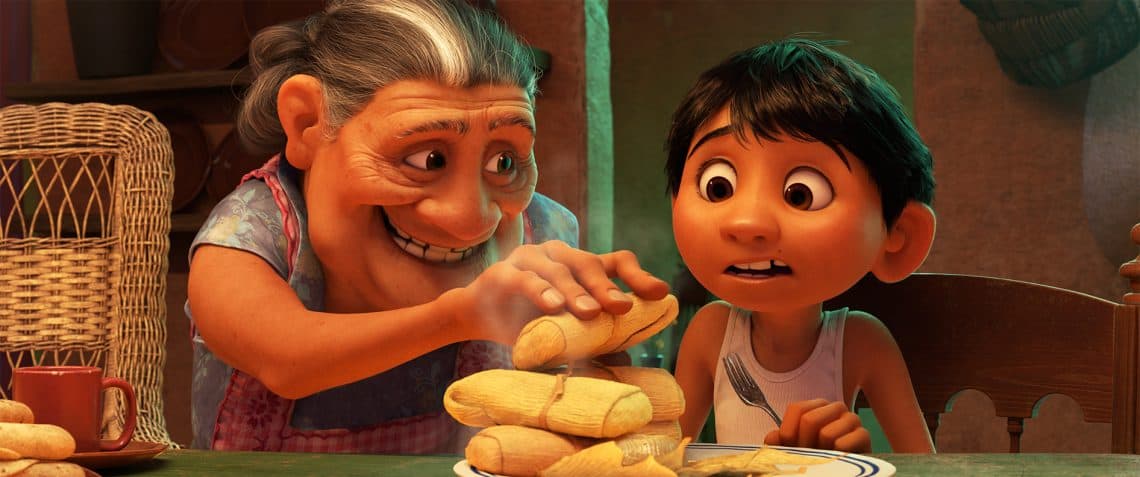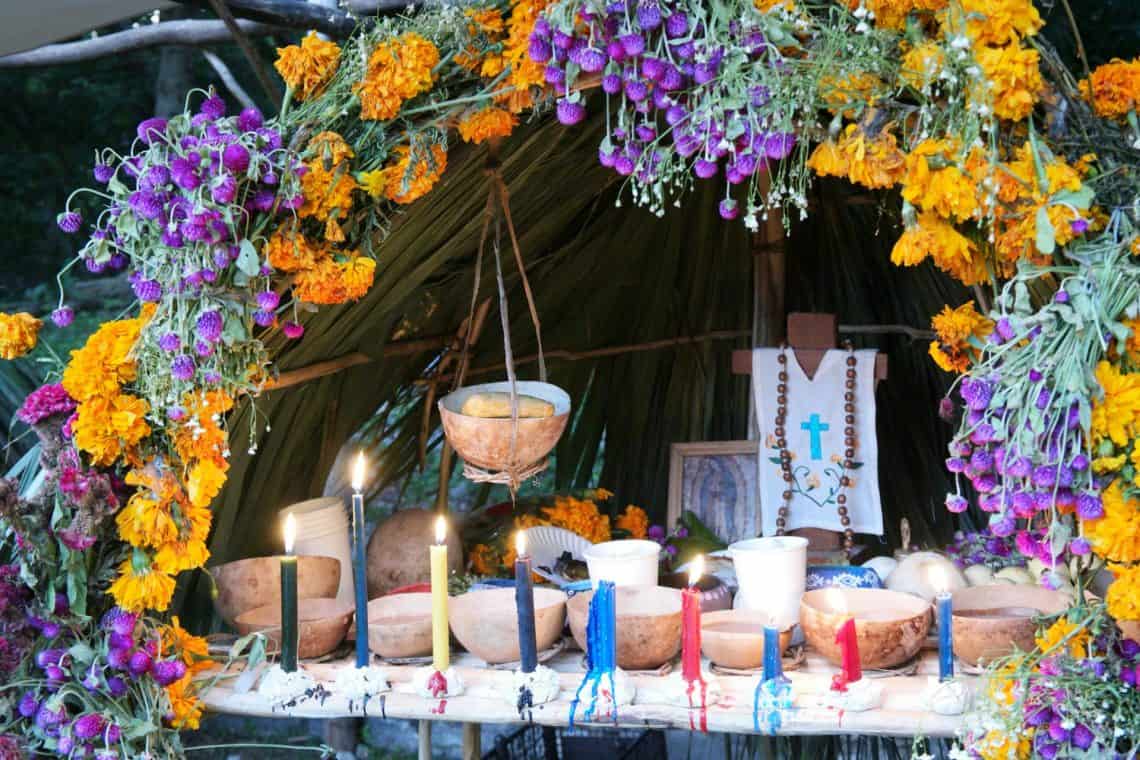In Disney•Pixar’s “Coco,” Miguel dreams of becoming an accomplished musician like his idol Ernesto de la Cruz —despite his family’s baffling generations-old ban on music.
Desperate to prove his talent, Miguel finds himself in the stunning and colorful Land of the Dead following a mysterious chain of events.
Along the way, he meets charming trickster Héctor, and together, they set off on an extraordinary journey to unlock the real story behind Miguel’s family history.
Much of the story centers around the tradition of Dia De Los Muertos, also known as Day of the Dead.
But before you watch, here are a few things you should know about Coco and Day of the Dead.
Dia De Los Muertos is NOT Halloween
Sure, Día de los Muertos and Halloween share some common features at first glance, but they are distinctly different holidays. They are not the same!

First of all (and not really that important) is that Halloween is on October 31st and Dia De Los Muertos is celebrated from October 31st to November 2nd.
Both holidays center around cultural beliefs regarding death and the idea that spirits return at this time of year.
However, during Day of the Dead festivities, the spirits are welcomed as family members that one hasn’t seen in a year.
There is no fear or sadness based in the celebration of Dia De Los Muertos. Instead, it is a happy, colorful holiday celebrating the lives of those who have died.
Dia de los Muertos Originated in Mesoamerica
Indigenous groups to Mesoamerica, including Aztec, Maya and Toltec, all had specific times when they commemorated their loved ones who had passed away.
After the arrival of the Spanish, this ritual of commemorating the dead was intertwined with two Spanish holidays: All Saints Day (Nov. 1) and All Soul’s Day (Nov. 2).
Need creative ways to entertain and educate your kids? We lots of free printable activities here!
Día de los Muertos is often celebrated on Nov. 1 as a day to remember children who have passed away, and on Nov. 2 to honor adults.

Today, Día de los Muertos is celebrated mostly in Mexico and some parts of Central and South America.
Recently it has also become increasingly popular among Latino communities abroad, including in the United States.
You Can Visit Actual Locations in Mexico That Are Seen in Coco
San Andrés Mixquic, Mexico City
The film shows several different locations famous for their festivities during Day of the Dead celebrations.
The cemetery of San Andrés Mixquic, a community in Mexico City, bears a striking resemblance to the cemetery depicted in the film.
Janitzio Island, Michoacán
Located in Michoacan, Janitzio Island is one of the best places in Mexico to celebrate Day of the Dead.
Locals hold a vigil at the ceremony on the night of November 1st in the belief that their loved one return for another night.

The graves are decorated with candles, flowers and offerings.
The Historic Center of Guanajuato
In De la Cruz’s tomb, Miguel is magically transported to the Land of the Dead, a mysterious and beautiful realm where he meets his dead relatives.
According to TripSavvy, there are numerous similarities between this land and Guanajuato, the historic town in central Mexico.
The Land of the Dead has a similar layout to the Mexican town, with colonial architecture, cobbled streets and balconies on many buildings.
The Ofrenda is an Important Element in Celebrating Dia De Los Muertos
A huge part of the Coco revolves around an object needed for the ofrenda. This is one of the most recognized and important parts of Dia De Los Muertos.

The ofrenda is a way for families to provide for their deceased love ones and honor them.
Every ofrenda also includes the four elements: water, wind, earth and fire. Water is left on the alter for drinking and paper banners represent wind.
Food from the earth and candles represent fire, but are also used in the shape of a cross so spirits can find their way.
Flowers, Butterflies and Skulls Are Common Symbols
Throughout the Coco movie, you will see many of these elements. But most notable are the presence of marigold flowers throughout the Land of the Dead.
In fact, they’re the only living plants in the gorgeous world.
This is because filmmakers learned that the cempasúchil, a type of marigold flower native to Mexico, is used during the celebration to place on ofrendas and around graves.

It’s believed that the color and smell of marigold petals help guide the spirit’s home during the celebration.